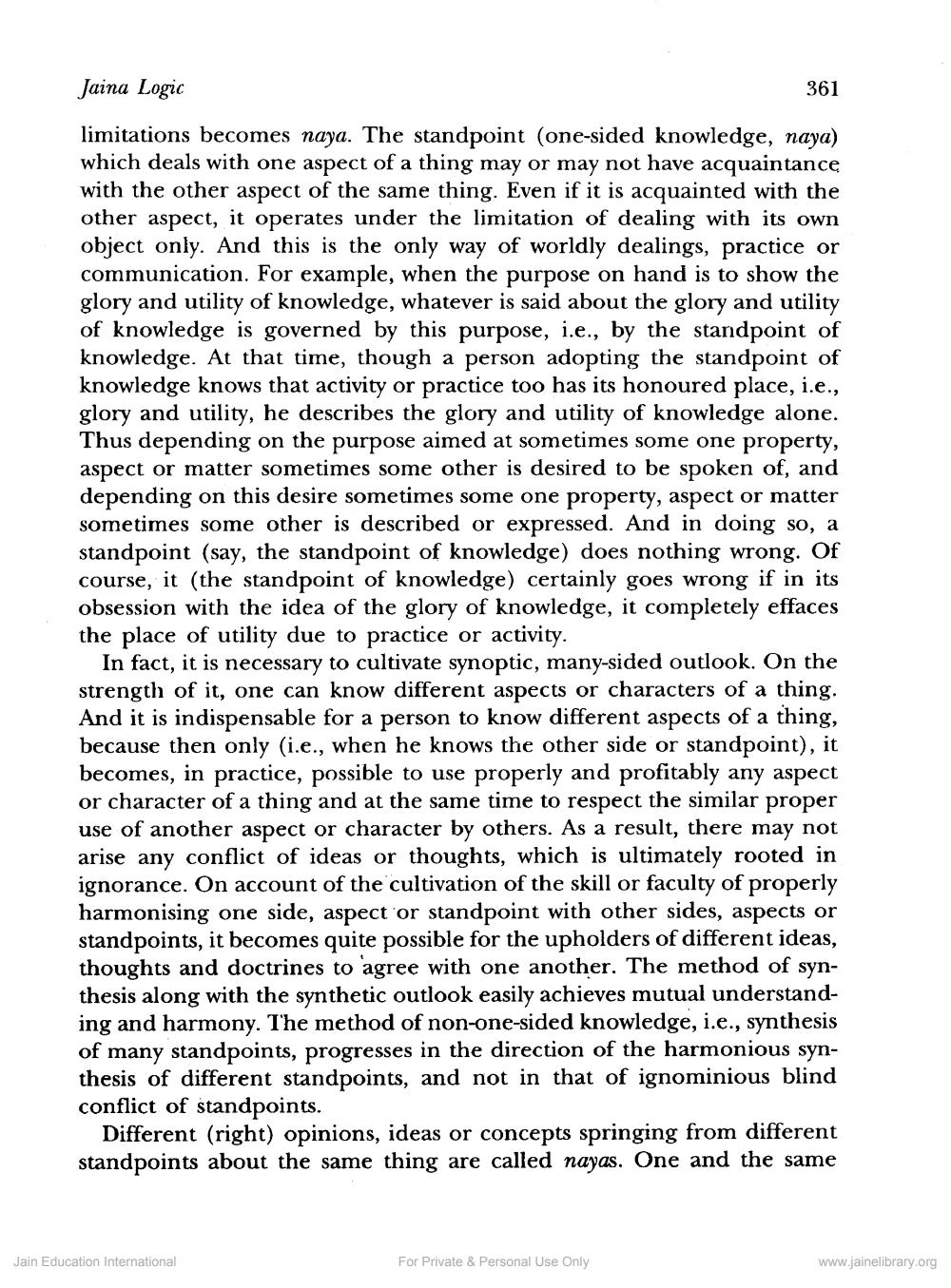________________
Jaina Logic
361
limitations becomes naya. The standpoint (one-sided knowledge, naya) which deals with one aspect of a thing may or may not have acquaintance with the other aspect of the same thing. Even if it is acquainted with the other aspect, it operates under the limitation of dealing with its own object only. And this is the only way of worldly dealings, practice or communication. For example, when the purpose on hand is to show the glory and utility of knowledge, whatever is said about the glory and utility of knowledge is governed by this purpose, i.e., by the standpoint of knowledge. At that time, though a person adopting the standpoint of knowledge knows that activity or practice too has its honoured place, i.e., glory and utility, he describes the glory and utility of knowledge alone. Thus depending on the purpose aimed at sometimes some one property, aspect or matter sometimes some other is desired to be spoken of, and depending on this desire sometimes some one property, aspect or matter sometimes some other is described or expressed. And in doing so, a standpoint (say, the standpoint of knowledge) does nothing wrong. Of course, it (the standpoint of knowledge) certainly goes wrong if in its obsession with the idea of the glory of knowledge, it completely effaces the place of utility due to practice or activity.
In fact, it is necessary to cultivate synoptic, many-sided outlook. On the strength of it, one can know different aspects or characters of a thing. And it is indispensable for a person to know different aspects of a thing, because then only (i.e., when he knows the other side or standpoint), it becomes, in practice, possible to use properly and profitably any aspect or character of a thing and at the same time to respect the similar proper use of another aspect or character by others. As a result, there may not arise any conflict of ideas or thoughts, which is ultimately rooted in ignorance. On account of the cultivation of the skill or faculty of properly harmonising one side, aspect or standpoint with other sides, aspects or standpoints, it becomes quite possible for the upholders of different ideas, thoughts and doctrines to agree with one another. The method of synthesis along with the synthetic outlook easily achieves mutual understand ing and harmony. The method of non-one-sided knowledge, i.e., synthesis of many standpoints, progresses in the direction of the harmonious synthesis of different standpoints, and not in that of ignominious blind conflict of standpoints.
Different (right) opinions, ideas or concepts springing from different standpoints about the same thing are called nayas. One and the same
Jain Education International
For Private & Personal Use Only
www.jainelibrary.org




